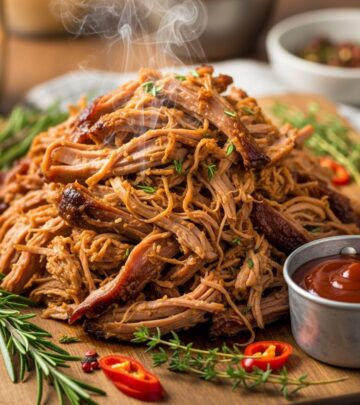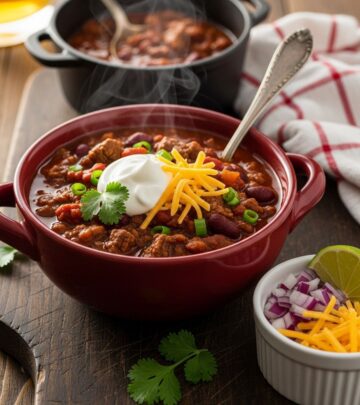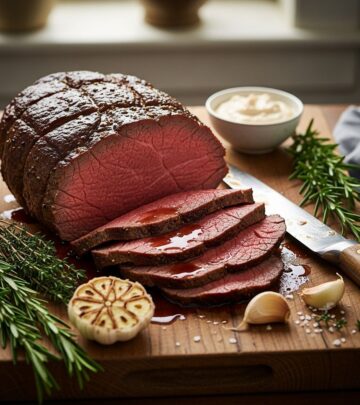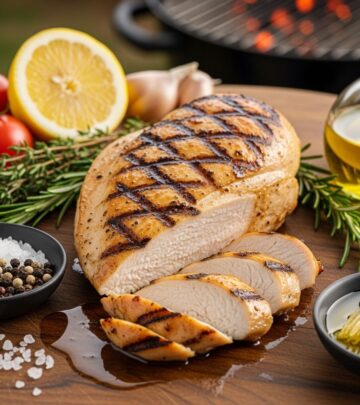The Frozen Vegetable Advantage: Maximizing Flavor, Convenience, and Nutrition
Flash-freezing preserves natural sweetness and vitamins to keep every meal vibrant.

The Frozen Vegetable Advantage: Why the Freezer Aisle May Beat the Produce Section
If you’ve ever opened your refrigerator to find a sad, wilted bunch of greens or a bag of forgotten beans turning mushy, you’re not alone. While fresh produce sings at the height of its season, much of what we bring home has already started losing its best qualities. Enter the often-underestimated hero of the home cook: frozen vegetables. With modern freezing techniques locking in flavor, texture, and nutrients, frozen vegetables aren’t just a convenience—they can be a superior choice for everyday cooking.
The Science Behind Superior Frozen Veggies
It’s easy to assume that “fresh is always best” when it comes to vegetables, but the reality is more nuanced. The journey from farm to grocery store shelf can be long, causing vegetables like peas, corn, and carrots to gradually lose sweetness and become starchy and tough. For example, a pea that’s been picked and left to sit for even a day loses sugar rapidly—degrading both its sweetness and its tender bite.
By contrast, frozen vegetables are typically picked at their peak of ripeness, blanched to halt enzyme activity (which would otherwise lead to further ripening and spoilage), and then flash-frozen within hours of harvest. This process preserves natural sugars, texture, color, and a vast majority of nutrients.
Why Flash-Freezing Matters: Ice Crystals and Cell Structure
- Industrial freezers achieve temperatures and rapidity that home freezers can’t match, freezing vegetables in just minutes.
- Fast freezing forms tiny ice crystals within the vegetable cells, minimizing cell wall rupture and ensuring the veg remains crisp-tender when cooked.
- Slow freezing (like in home freezers) creates larger ice crystals, which burst cell walls and lead to a mushy texture once thawed.
This rapid commercial freezing ensures that, when properly cooked, frozen vegetables can taste as good as—or sometimes better than—many “fresh” out-of-season options.
Key Frozen Vegetables and Why They’re Standouts
Not all vegetables freeze equally well. Some, like lettuces and cucumbers, fare poorly, becoming limp and waterlogged. Others, however, shine after a deep freeze. Here are the top MVPs of the freezer aisle:
- Peas: Difficult and time-consuming to shuck at home and fleetingly fresh during the spring, frozen peas are affordable, sweet, and always ready for salads, pastas, and stir-fries.
- Corn: While nothing beats fresh corn on the cob in season, frozen corn is cut at perfect ripeness and is excellent in chowders, salads, and casseroles—no shucking or silk-removal required.
- Spinach: Often used in dips, curries, and lasagna, frozen spinach saves you tons of prep and waste. It’s pre-washed, pre-cooked, and easy to handle in a pinch.
- Broccoli, Carrots, and Green Beans: These workhorses are ideal in soups, stews, and stir-fries, offering reliable quality even when the produce section’s offerings fall flat.
Frozen vegetables allow you to avoid both prep work and worry about produce going bad before you use it.
How to Cook Frozen Vegetables for the Best Texture and Flavor
If you’re used to thawing frozen vegetables before cooking—because that’s the typical advice for frozen meats and stocks—think again. Thawing allows all the moisture trapped in the ice crystals to flood out, resulting in soggy, bland vegetables and cooking them poorly in whatever dish you intend.
Key Principles for Great Results
- Don’t thaw—cook straight from frozen. This prevents a buildup of water and keeps flavor intense.
- Use high heat. Start with a hot pan to drive off any surface ice fast, so the vegetables cook in their own juices and not in a puddle.
- Avoid over-crowding the pan. Too many vegetables at once will drop the temperature and lead to steaming rather than sautéing or roasting.
Suggested Cooking Methods
- Sauté: Toss frozen vegetables into a hot skillet with a small amount of oil or butter. Stir frequently for a few minutes until heated through and beginning to brown at the edges.
- Roast: Spread frozen vegetables in a single layer on a hot baking sheet and roast at 425°F (220°C), flipping halfway through. They’ll caramelize and crisp, losing any freezer-induced sogginess.
- Steam: For vegetables headed into soups or casseroles, a quick steam in a covered pan with a bit of water is all you need; season afterwards to taste.
- Microwave: Best for rapid reheating rather than developing flavor, but still a strong option when speed trumps all else.
Common Mistakes and How to Avoid Them
- Thawing before cooking. Unless the recipe specifically calls for thawed frozen vegetables (like in a smoothie), stick to adding them frozen to the dish.
- Overcooking. Frozen vegetables are par-cooked before freezing, so they need less cooking time than raw. Overcooking leads to mushiness and blandness.
- Skipping seasoning. Frozen vegetables come unseasoned, so taste as you cook and adjust salt, pepper, and herbs as needed.
Nutrition: Are Frozen Vegetables as Healthy as Fresh?
One of the biggest worries home cooks have is whether frozen vegetables lose their nutritional punch. Research shows that, because they’re picked and processed at peak freshness, frozen vegetables often contain equal or even slightly higher levels of certain vitamins compared to those sitting in storage or transit for days or weeks. Blanching (briefly boiling before freezing) does result in minor water-soluble vitamin loss, but far less than the gradual degradation that occurs in “fresh” produce as it ages in your fridge.
When to Choose Frozen and When to Choose Fresh
| Best Fresh | Best Frozen |
|---|---|
| Leafy greens for salads | Peas, corn, and spinach for cooked dishes |
| Tomatoes for slicing/eating raw | Broccoli, green beans, carrots for stir-fries and soups |
| Herbs for garnishing | Sliced peppers, mixed vegetable blends for casseroles or roasts |
Use fresh vegetables for dishes where texture and bright flavors are essential raw (like salads and crudités), and frozen for anything cooked or blended—think pastas, soups, curries, and even grain bowls. The convenience and consistency of frozen vegetables often win out in daily cooking.
Buying and Storing Frozen Vegetables: Pro Tips
- Buy plain, unseasoned varieties. Avoid frozen vegetables with added sauces, seasonings, or salt for maximum versatility and control over flavor and sodium content.
- Check for solid bags. Squeeze the bag lightly at the store; it should feel loose, not like a solid block (a sign it’s thawed and refrozen at some point).
- Label and rotate. Mark bags or containers with the purchase date, and use older vegetables first for best quality.
- Store at 0°F (-18°C) or below. This ensures safety and preserves shelf life—most frozen vegetables stay best for 8 to 12 months.
- Don’t refreeze thawed vegetables. Quality and safety degrade after partial thawing, so only thaw what you plan to use.
How to Freeze Your Own Vegetables at Home
While commercial flash-freezing gives the best results, home cooks can still freeze their own produce effectively by following these steps:
- Choose peak-season produce. Start with ripe, high-quality vegetables.
- Wash and prep. Trim, peel, and cut vegetables as needed.
- Blanch quickly. Boil small batches for 1-2 minutes, then cool rapidly in an ice bath. This process inactivates enzymes that would otherwise cause spoilage and color loss.
- Dry thoroughly. Use a salad spinner or towel to remove excess water, to prevent clumping and freezer burn.
- Spread and pre-freeze. Arrange in a single layer on a parchment-lined tray and freeze until solid, then package in airtight containers or freezer bags, pressing out as much air as possible.
- Label and date. Don’t forget this essential for tracking quality and safety.
Remember, the faster you freeze, the smaller the ice crystals and the better the final texture of your vegetables.
Creative Ways to Use Frozen Vegetables
Frozen vegetables are not just a fallback for last-minute meals—they can elevate all kinds of everyday dishes:
- Stir-fries: Toss frozen broccoli, beans, or peppers directly into a hot wok or skillet for quick, vibrant dishes.
- Pasta and risotto: Add frozen peas or corn at the end of cooking for bursts of sweetness and color.
- Soups and stews: Frozen carrots, green beans, and mixed veg are perfect for simmering in broth-based dishes.
- Dips and spreads: Thawed, squeezed-dry spinach is flawless for creamy dips, while blanched, frozen greens blend easily into hummus or pesto.
- Sheet-pan dinners: Mix frozen veggies with oil and your favorite proteins for an easy, all-in-one meal.
Frequently Asked Questions (FAQs)
Q: Will I lose nutrients by choosing frozen over fresh?
A: No significant loss. In fact, frozen vegetables are usually frozen at peak freshness, locking in more nutrients than fresh produce that’s spent several days in transit or storage.
Q: How can I keep my frozen vegetables from going mushy?
A: Cook them straight from frozen over high heat and avoid overcooking. Roasting and stir-frying work particularly well for texture.
Q: Is it safe to eat vegetables straight from the freezer?
A: No. Always cook frozen vegetables before eating; although the blanching step reduces microbes, some may remain and resume growth upon thawing.
Q: What’s the best way to season frozen vegetables?
A: Add salt, herbs, and a squeeze of lemon or a drizzle of olive oil after cooking for fresh, vibrant flavor—don’t be afraid to season boldly.
Q: Which vegetables are best bought fresh, not frozen?
A: Leafy salad greens, cucumbers, and tomatoes intended for raw eating are better fresh due to texture changes caused by freezing.
References
Read full bio of Sneha Tete












